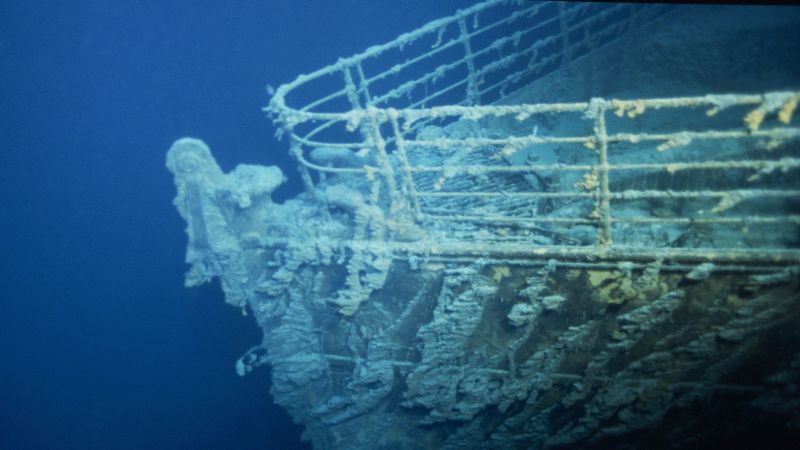The North Sea Wrecks Project – Explosives and toxic elements across the seafloor of the Belgian Navy ship V-1302 John Mahn
More than 80 years after the World War II ship sank, explosives and toxic elements are still leaking from the ocean floor.
“People often forget that below the sea surface, we, humans, have already made quite an impact on the local animals, microbes, and plants living there and are still making an impact, leaching chemicals, fossil fuels, heavy metals from — sometimes century old — wrecks we don’t even remember are there,” Van Landuyt said in a statement.
In the Belgian part of the North Sea, located just one of thousands of ship and aircraft wrecks, lies the V-1302 John Mahn. The ship was used as a patrol boat during World War II by the German Navy.
The ship was attacked by six British air force aircraft on February 12, 1942. The ship quickly sank after two aerial bombs struck it. The strike claimed the lives of 11 sailors and carried the ship’s cargo — munitions and coal reserves — to the bottom of the sea.
The North Sea Wrecks project began as a group of researchers began to study the potential impact of the shipwreck. The goal of the project is to investigate wrecks located across the North Sea seabed, according to Van Landuyt. The North Sea borders Belgium, Norway, Denmark, the Netherlands, Great Britain and Germany — all of which were involved in WWII.
She hopes the data collected by the project will help policy makers decide the best steps in dealing with the North Sea’s wrecks and protecting its ecosystem.
“The research performed within this project will be used to develop a decision-making tool to asses the potential environmental risk a war time shipwreck poses on the environment, which will hopefully contribute to a safe and healthier marine environment.”
Heavy metals included nickel and copper in the samples. PAHs are chemicals that are naturally found in gasoline, coal and crude oil.
The team found the highest concentration of metals close to the coal Bunker, but it was also found in the aftermath of the wreck. The samples with the most concentrated chemicals were also located close to the ship.
Other chemical warfare agents can be toxic to marine life. Petroleum products are also known to impact the growth, reproduction, feeding and tissues of marine organisms, according to the study.
“Remediation techniques (such as removing munitions by divers, pumping out oil tanks) are available but they are challenging and expensive to attempt,” she said. The decision-support tool allows us to focus resources.
The Nargeolet-Fanning Ridge blip: What do marine biologists want to know about deep-sea life?
Nargeolet is trying to identify a blip in the sky that he hopes to see on a future expedition. It was recorded in the same survey he performed years ago, in between the wreck of the Titanic and the newly uncovered reef — now named the Nargeolet-Fanning Ridge after him and the 2022 expedition’s mission specialist Oisín Fanning. Nargeolet thinks it’s going to be even bigger than this reef.
P.H. Nargeolet, a veteran Nautile submersible pilot and Titanic diver, originally picked up the blip on echo sounding equipment in 1996, but its origins have remained unknown.
“It is biologically fascinating. The animals that live there are very different to the animals that are found otherwise living in the abyssal ocean,” said Murray Roberts, a professor of applied marine biology and ecology at the University of Edinburgh in Scotland and one of the researchers on the expedition. It was a really important piece of work by Nargeolet. He thought it was a wreck, but it turned out to be more amazing than he thought.
Roberts says the ocean floor at a water depth between 3,000 and 4,000 meters makes up 60 percent of Earth’s surface. It is thought to be a muddy seabed without much structure. On a few occasions, divers have observed rocky formations on the plain. Roberts thinks features found near the Titanic might be more common than previously thought.
Rocky areas may also help explain the distances that sponges and corals travel across the ocean floor, which has always been a mystery to scientists. Within the muddy environment where they are typically observed, there are few hard surfaces for these species to latch onto in order to grow and reproduce.
Sometimes they turn up in places that we are curious about how they got there. They don’t live long enough to get there,” Roberts said. I think it would help us understand the distribution of these species if there were more rocky places and stepping stones.
The researchers are currently working on analyzing images and videos taken of the reef during their dive, and they intend to share their findings to improve the scientific community’s collective knowledge of deep-sea life. Roberts also hopes to link this discovery to a wider Atlantic Ocean ecosystem project he leads, called iAtlantic, that will allow for further study and protection of the fragile ecosystem within the reef.
OceanGate Expeditions and their foundation — which, along with Fanning, provided the financial support for Nargeolet’s dive this year — will continue its longitudinal research work of the Titanic and surrounding areas in 2023.
The marine life was so beautiful, it was so beautiful. I was surprised to see that, I never expected it in my life. I will be very happy to continue looking at the Titanic.
